Last week we shared geocaching, but have you ever heard about the sister to geocaching, – Letterboxing? A GPS treasure hunt with stamps ? I love this blog from Courtney blog, thanks for sharing your passion with us. – Kari
By Courtney

What is letterboxing? First off, there are two aspects to letterboxing- finding them and leaving them. The site that I usually use is http://www.letterboxing.org/.You can search the locations of letterboxes all over the world. You can also create an account to list letterboxes of your own that you have hidden.The roots of letterboxing are debatable, but here is a site with some info: http://www.atlasquest.com/about/history/.Basically they are boxes hidden by people that you can find outdoors by following clues.Some are easy to find and some are very hard, depending on what kind of a challenge you would like.

The letterbox
What you will find (or what you should create) is a water resistant box with a plastic “ziploc” type bag containing:
A notepad
A stamp
A stamp pad (though you should also carry your own in case there isn’t one or the one in it isn’t working)
A pen/pencil
A note stating that this is a letterbox and it is NOT TRASH and that it should be found where it was left. It is also best to leave your email address on this note or inside the notepad so people can contact you and let you know if they found it or if the letterbox needs repair/replacements in any way. I usually write “To find out more about letterboxing go to letterboxing.org.” so people can figure out exactly what it is that they found.
Sometimes you’ll find other things in one, like we found a “hitchhiker” once which is an extra stamp and notepad that you take with you and put in another letterbox that you find, so it hitchhikes around to various boxes.
Here is a picture, though I neglected to put the stamp pad and note in! If you have a box with a clear top you can also tape a note so it can be seen from the outside of the box.
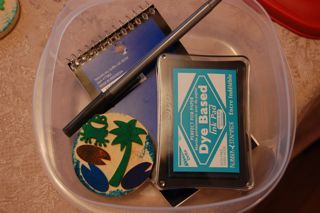
What to carry with you when finding :
A personal stamp
A pad of paper to record your finds.
A pen/pencil
A stamp pad
A sample find : You find clues to a letterbox, you find it and open it. Stamp your personal stamp into the notebook in the letterbox and then take the stamp in the letterbox and stamp it into a notebook that you carry with you to record your finds. I also date them so I can remember when I found them.
I recommend finding one first before making one so you can get some inspiration.
Also if you’re letterboxing with children I suggest carrying a ready-made letterbox with you just in in case you can’t find the letterbox that you are hunting for or if it has gone missing, then you can hide your own instead and the kids won’t be as disappointed. Letterboxing is a great way to discover nature or a new place. Sometimes people even hide multiple letterboxes in a location to give you a “tour” of the area as you find them. It’s also a great thing to do on vacation. My favorite letterbox find was one at the Blue Lagoon in Iceland

A SAMPLE FIND: You find clues to a letterbox, you find it and open it. Stamp your personal stamp into the notebook in the letterbox and then take the stamp in the letterbox and stamp it into a notebook that you carry with you to record your finds. I also date them so I can remember when I found them.
Now for the details- STAMPS! There are two basic categories of stamps: a letterbox stamp and a personal stamp. A letterbox stamp is one that is located inside a letterbox for the finder to stamp into their personal notebook as a record of what they found. A personal stamp is a stamp that you carry with you whenever you are letterboxing so you can leave an image of it in the notebooks of the letterbox so other people and the letterbox owner can see who have visited it.
PERSONAL STAMPS
Usually people have letterboxing nicknames for themselves and/or they have a symbol that they like to use on their stamp. For example my stamp has a monkey because I like monkeys.
LETTERBOX STAMPS
Letterbox stamps usually have something to do with the location. For example, I found one at a park near a beach and the stamp had seashells on it.
MAKING VS. BUYING STAMPS
A part of letterboxing that I enjoy is taking the time to make the stamps. You don’t have to make them, but it’s more economical and fun, so why not? I’ve come up with two different ways to make stamps- the “kid” way and the “adult” way. After making stamps with my own kids and with kids at my school where I ran a letterboxing club, I’ve found the most simple kid friendly way to make stamps. I started off by having the kids cut their own designs from foam to mount on a wooden block, but they were frustrated that they were unable to get the detail they wanted in a stamp. This is what we do now:
FOAM STAMPS
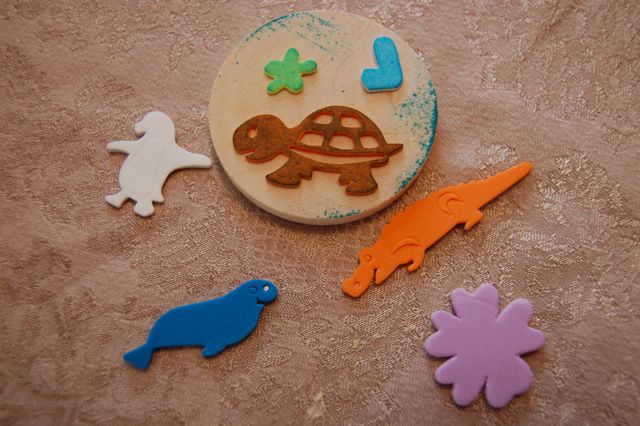
In your local craft store they should have a woodworking section. I found small round 1/4″ pieces of wood in this section that I use for mounting stamps. I wanted square, but they didn’t have any, so the round are fine. Then make your way over to the foam section. These foam pieces have become very popular over the past several years. They usually come in themed packets (jungle animals, sea life, etc.) and you can find them in very small sizes so you can fit them on your stamp. The best thing is that they’re stickers, so you don’t even need to glue them! If they have detail on them, like eyes, etc. then make sure you pop those out, then remove the backing and stick! We put a letter on this one below, but I had to custom cut it because if you have a letter that isn’t a mirror image, it will show up backwards once you stamp onto paper.
After you finish making your stamp, put an arrow on the back so you know which way is up when stamping and you can write your name on it.
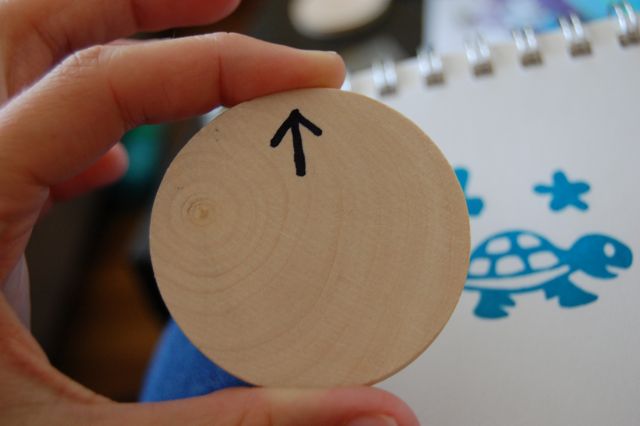
RUBBER STAMPS
There are many different ways to carve stamps. You can see in the picture below that you can use an eraser, Speedy Stamp (the pink stuff) and any other type of rubbery material. I don’t remember what the grey stuff is, but I got it from the art teacher at a school where I used to work and it was already mounted on some type of ply-board.
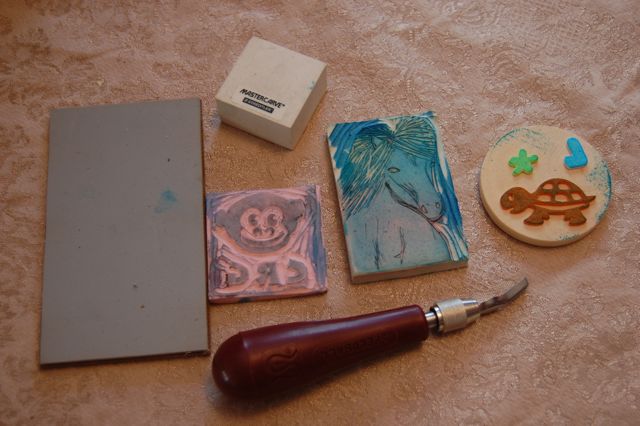
I usually use Speedy Stamp which is made by Speedball. You can see I used it for my monkey stamp. I use a Speedball linoleum cutter to carve the stamp.
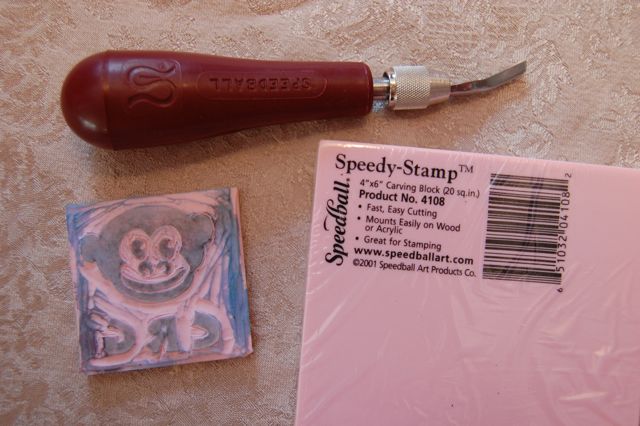
Here’s how I go about it: I find an image that I want, copy it into a Word document, size it properly for my stamp and print it out. This site is a good resource for clip art- http://www.arthursclipart.org/silhouettes/animals.htm. You can always just draw as well. Then color it in completely in pencil.
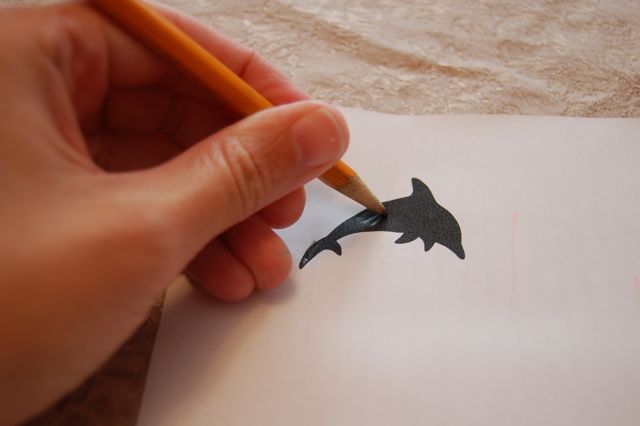
Cut the Speedy Stamp down to the size you want (it comes in large sheets), then lay the image face down on the Speedy Stamp. Rub the back of the paper with the side of your pencil like you would if you were doing a leaf rubbing, to get the pencil to transfer onto the Speedy stamp.

Now you can carve away the Speedy stamp from around the image. I usually trace the outline of the image with a small linoleum cutter tip first and then work my way out. I didn’t finish this one, but you can see how I did it on the monkey stamp. If you want letters on your stamp then you can simply print them out with your image, they’ll transfer onto the stamp backwards which is just how you want it.
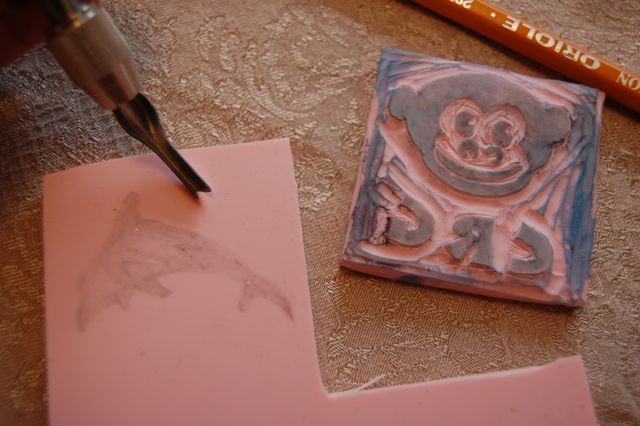
Once you’ve made your stamp and procured a notepad for yourself, you’re ready to out and hunt for a letterbox.







